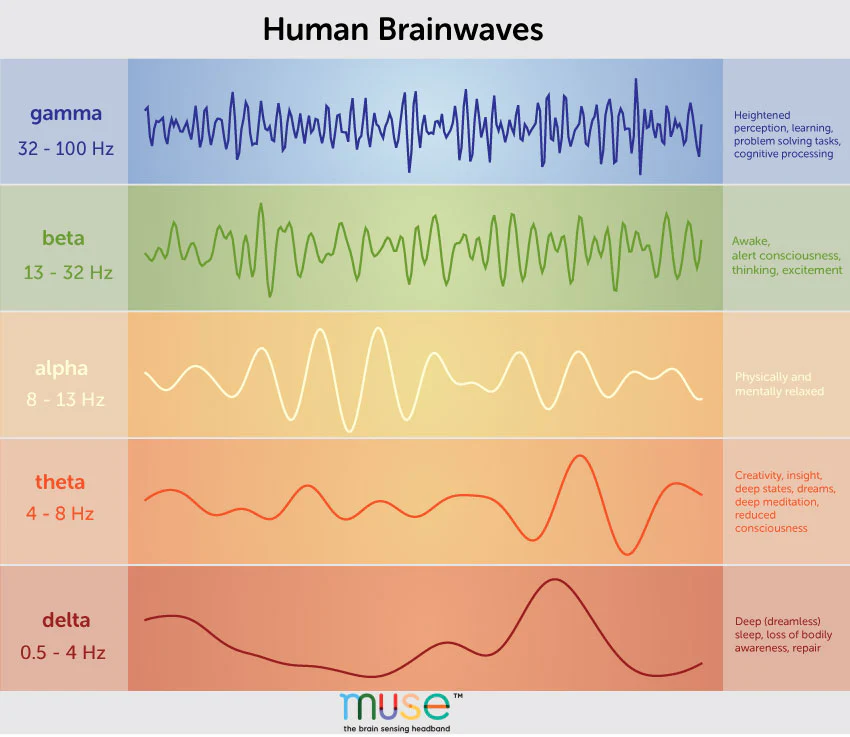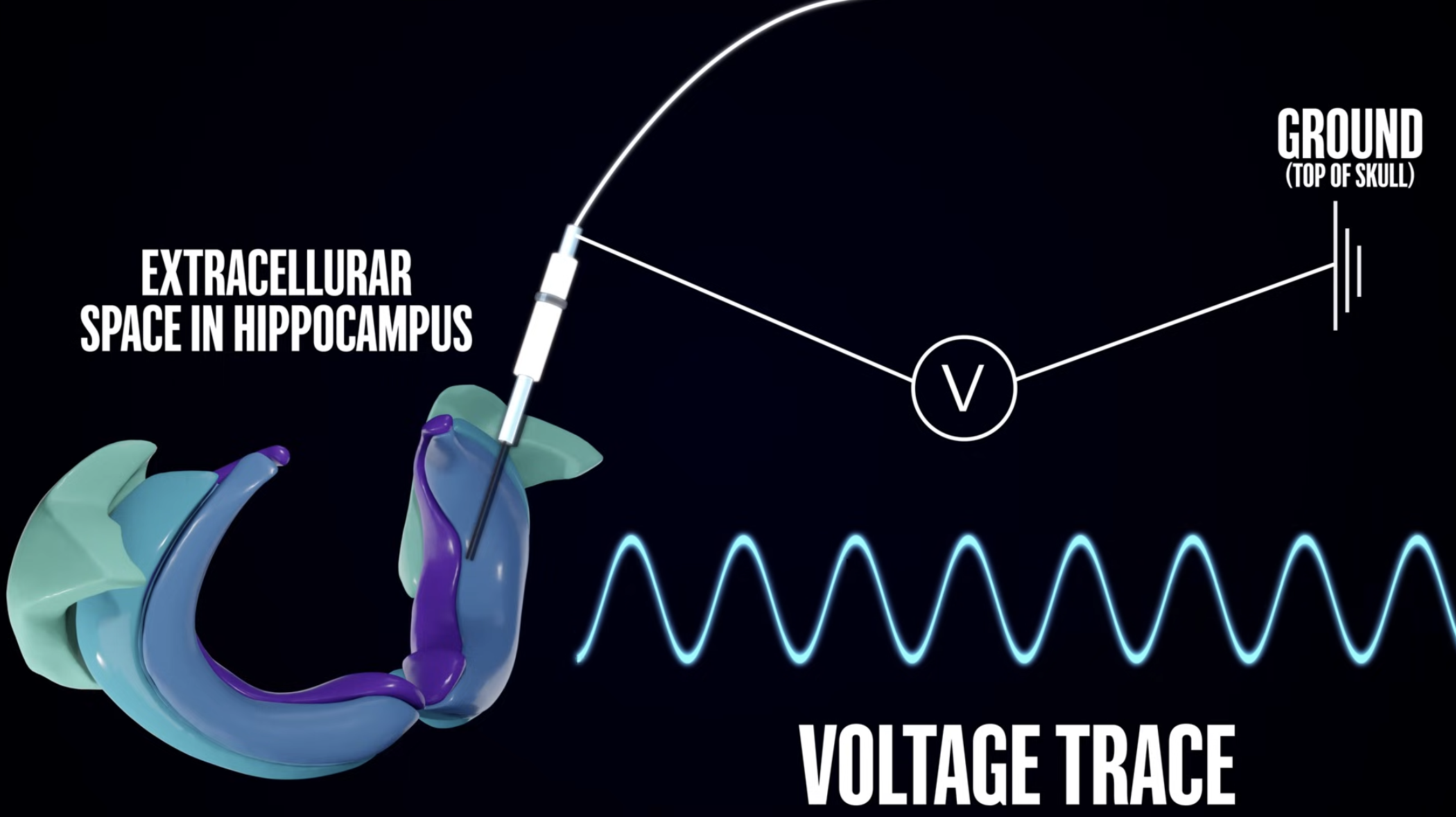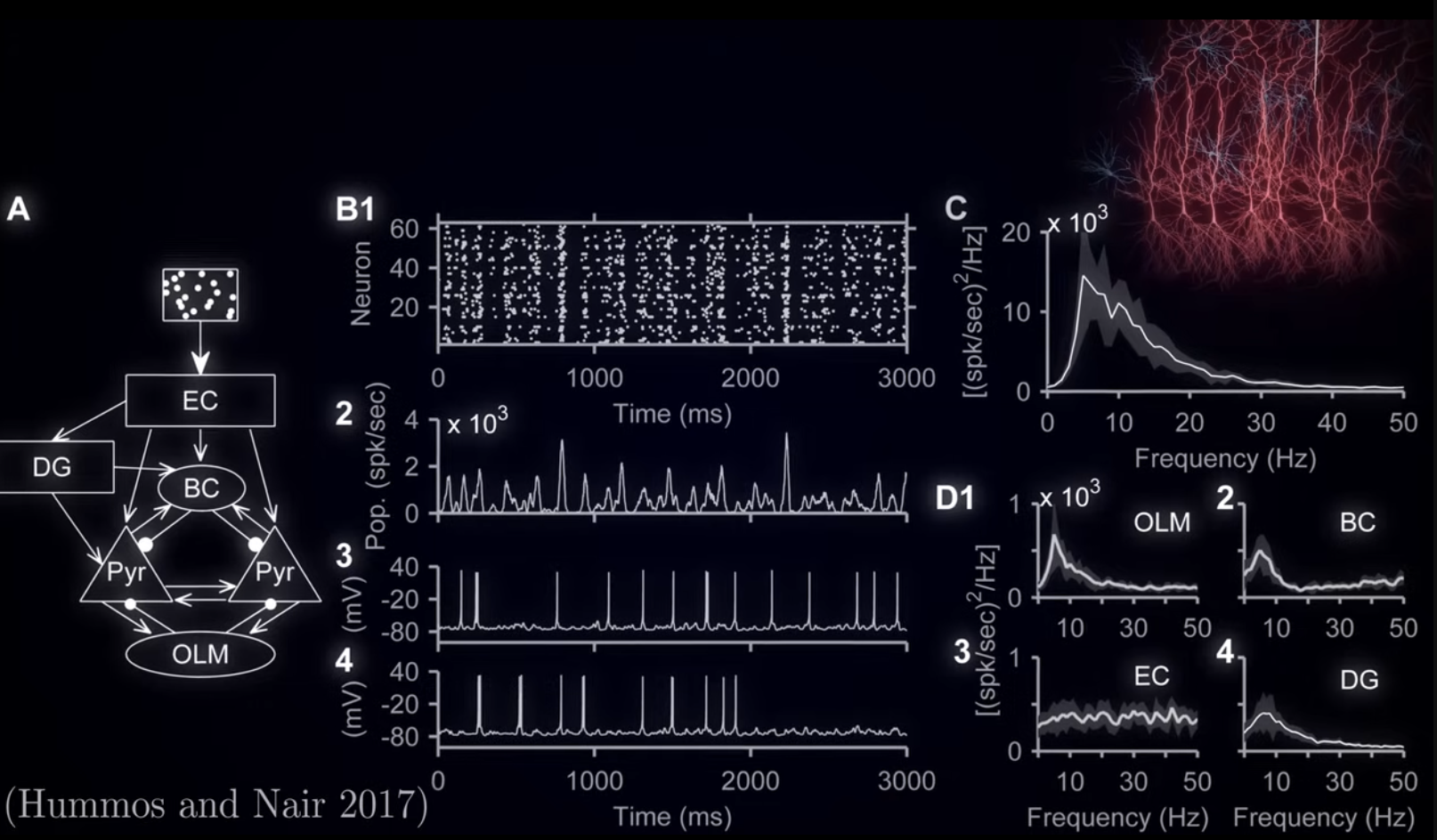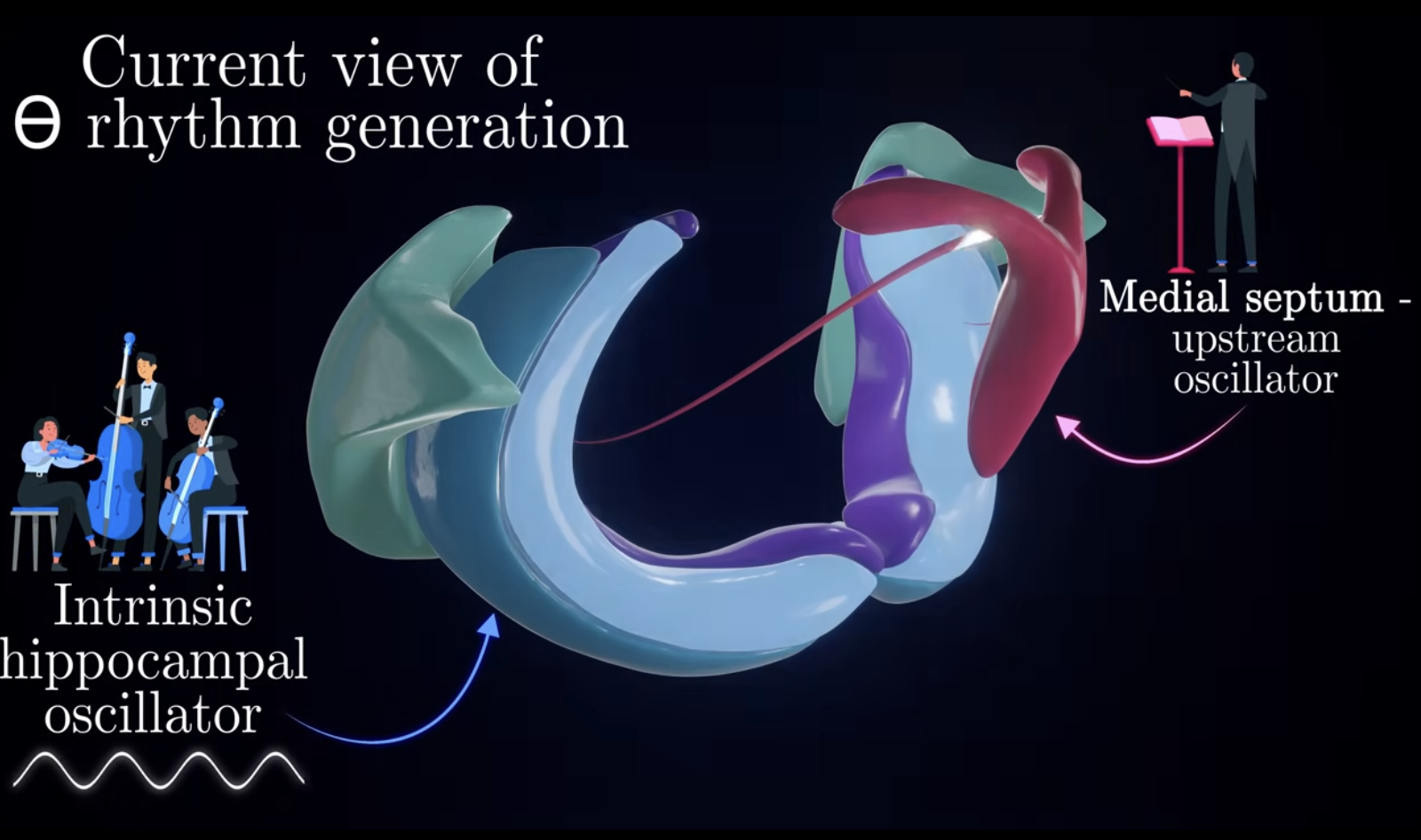study notes for a Artem Kirsanov video
Recently, there have been some significant advancements in decoding the hippocampus, and how it is involved in memory. This is a very complex structure, and it is not yet fully understood. However, we do know that the hippocampus is involved in the formation of new memories, and the retrieval of old ones.
More specifically, looking at the brain’s internal clock, the Theta Rhythm is a very interesting phenomenon. This is a brain wave that is present in the hippocampus, and it is associated with memory formation and retrieval. We believe that the theta rhythm is a clock that helps the brain to organize memories in time.
Brain Waves
Let’s start by coming to understand what the brains internal waves actually are.
Brain Waves were first discovered in the 1920s by a German psychiatrist named Hans Berger. He discovered that the brain emits electrical signals, and that these signals can be measured using an Electroencephalogram (EEG), essentially some electrodes attached to someone’s head. This is a device that measures the electrical activity of the brain.
What was shown was several different oscillating patterns, which we now call Brain Waves. These waves are classified by their frequency, and they are associated with different states of consciousness.
At this point in history, we know quite a lot about the different kinds of brain waves, and the frequencies that they operate at. For example, Delta Waves are associated with deep sleep, Alpha Waves are associated with relaxation, and Beta Waves are associated with alertness.

But for this note, we are interested in the Theta Rhythm. This is a wave that operates at a frequency of around 4-8 Hz, and it is associated with the hippocampus.
Generation of Theta Rhythm
The theta rhythm is characteristically described by its wavelength, with a frequency between 4 and 12 Hz.
It is measured by sticking an electrode inside the hippocampus and measure the voltage difference between a point in Extracellular Space and a ground electrode ( typically in the base of the skull ).
This voltage arises out of the summation of currents of neurons, reflecting synchronous synaptic inputs.
That is, when one neuron sends information to another through synapses.

In the case where there is a large number of neurons surrounding this electrode, and they are constantly sending signals simultaneously, then these individual currents add up, leading to the voltage becoming strong enough to be sensed by external electrode.
Note
Remember this measurement is finding the overall activity sensed by the electrode, and not the behavior of any individual neuron. As Artem put it, this is like putting a microphone over a stadium, you cant discern individual phenomena but rather general group behavior patterns(which are still useful).
This special rhythm is generated in a special structure, called the Medial Septum. This structure contains a large amount of something called Pacemaker Neurons, which are known to regularly discharge something between 4 and 12 times a second.
These special neurons have some special proteins called [Hyperpolarization Activated Channels], which allow Ions to flow into the cell at a regulated time interval, generating this rhythmic pattern.

Fun Fact
These are the same proteins that your heart uses to regulate its beating rhythm.
These Pacemaker Neurons then send their connections straight to the Hippocampus, thus providing the rhythmic output and leading to the rise of the theta wave. This causes the activity of the Hippocampus to wax and wane, following the rhythm that the conductor(Medial Septum) is providing.
Quick Note again...
This is quite the oversimplification of an otherwise very complex process. As Artem mentions, a group of researchers led by Romain Goutagny1 found that under certain conditions, the Hippocampus itself can generate theta rhythm, indicating that it contains some neuronal machinery sufficient enough for the generation of intrinsic rhythm.
In this scenario, it would mean that the hippocampus, much like a well trained orchestra, can perform coherently even in the absence of its conductor.
Goutagny Et al.1 found that rhythmic activity arises due to the interactions between excitatory and inhibitory neurons, through a negative feedback loop.

It is quite an elegant mechanism, however a tad bit complex for an introduction to Theta Rhythm. I will most likely create a note later on taking a deeper look at the paper alone.
Aside from that quick detour, let us assume that for the most part, the Medial Septum is responsible for the beat generation for the Hippocampus. Even though the hippocampus does have an intrinsic oscillator within, a bulk of the computation will come from the upstream oscillation of the medial septum.

Functions of the Theta Wave
Footnotes
-
Goutagny R, Jackson J, Williams S. Self-generated theta oscillations in the hippocampus. Nat Neurosci. 2009 https://pubmed.ncbi.nlm.nih.gov/19881503/ ↩ ↩2
-
Hummos A, Nair SS. An integrative model of the intrinsic hippocampal theta rhythm. Lytton WW, editor. PLoS ONE. 2017 https://pubmed.ncbi.nlm.nih.gov/28787026/ ↩